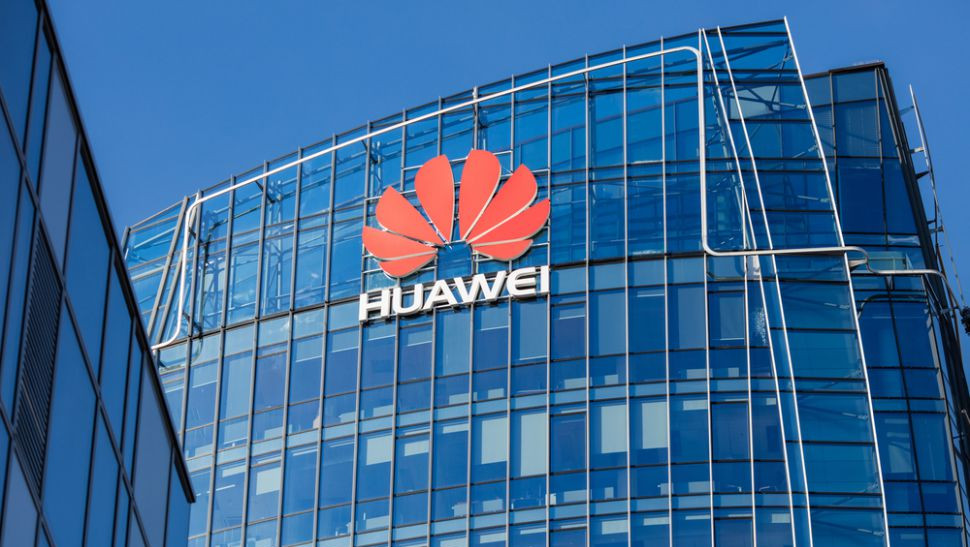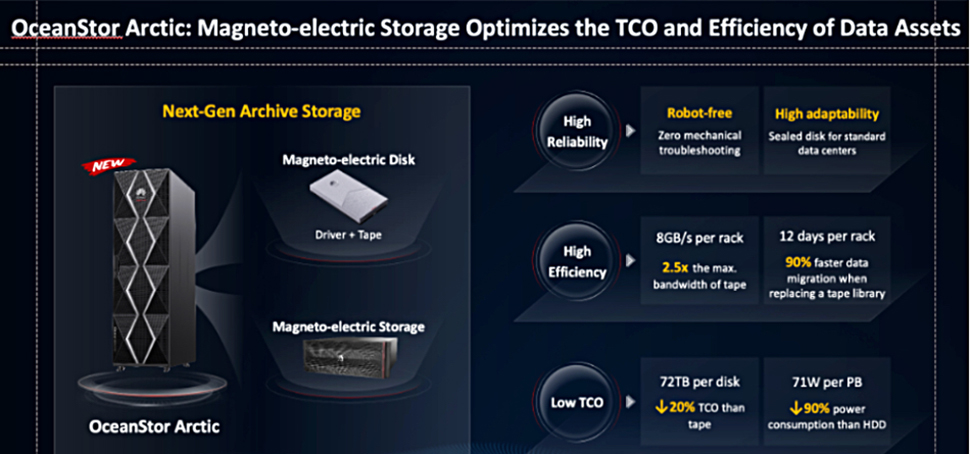
- Huawei develops SSD-tape hybrid for warm and cold data storage
- MED system offers efficient storage with NAND speeds
- First-gen holds 72TB, uses 10% of the power required by disk drives
It’s no secret that Chinese companies are becoming increasingly inventive when it comes to circumventing the challenges caused by the US export tech restrictions that prevent access to advanced semiconductor technology and critical components.
Huawei, in particular, is leading the way here as it looks to become China’s answer to Nvidia, and was recently reported courting Chinese hyperscalers to use its new Ascend AI chip instead of Nvidia's H100.
Blocks & Files reports that Huawei has developed an SSD-tape hybrid which combines Magneto-Electric Disk (MED) archive storage with a Huawei-developed tape drive. This hybrid will enable the delivery of warm and cold data storage in a single solution.

Expected to arrive next year
This development was first reported back in March 2024, but Blocks & Files now has a presentation image and more details about the MED.
The site writes: “The MED is a sealed unit presenting a disk-like, block storage interface to the outside world, not a streaming tape interface. Inside the enclosure, there are two separate storage media devices: a solid-state drive with NAND, and a tape system, including a tape motor for moving the tape ribbon, a read-write head, and tape spools.”
Unlike traditional tape cartridges with a single long reel, the MED features a compact design with a tape reel half the length of an LTO tape and an additional empty reel for used tape. This setup allows the MED to handle data storage more efficiently while integrating both solid-state and tape storage technologies.
The system functions as a dual-purpose solution, acting as an archive for cold data and nearline storage for warm data. Warm data is accessed rapidly through the SSD at NAND speed, making it ideal for frequently used information. Cold data, stored on the tape, requires more time to retrieve (up to two minutes), as the system must locate the data and adjust the tape ribbon to the correct position for reading.
The first generation of the MED, expected to arrive next year, reportedly holds 72TB of data (it’s unclear whether this refers to raw or compressed capacity) and consumes just 10% of the power required by disk drives. According to Huawei, a MED rack will deliver 8GBps, hold more than 10PB, and require less than 2kW of electricity. A second-generation model could follow in 2026 or 2027.







